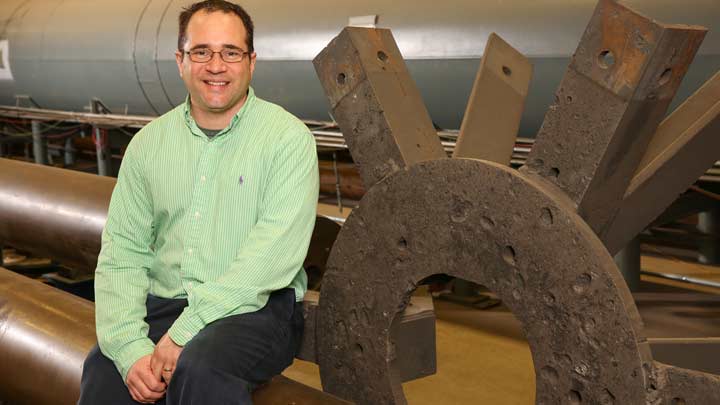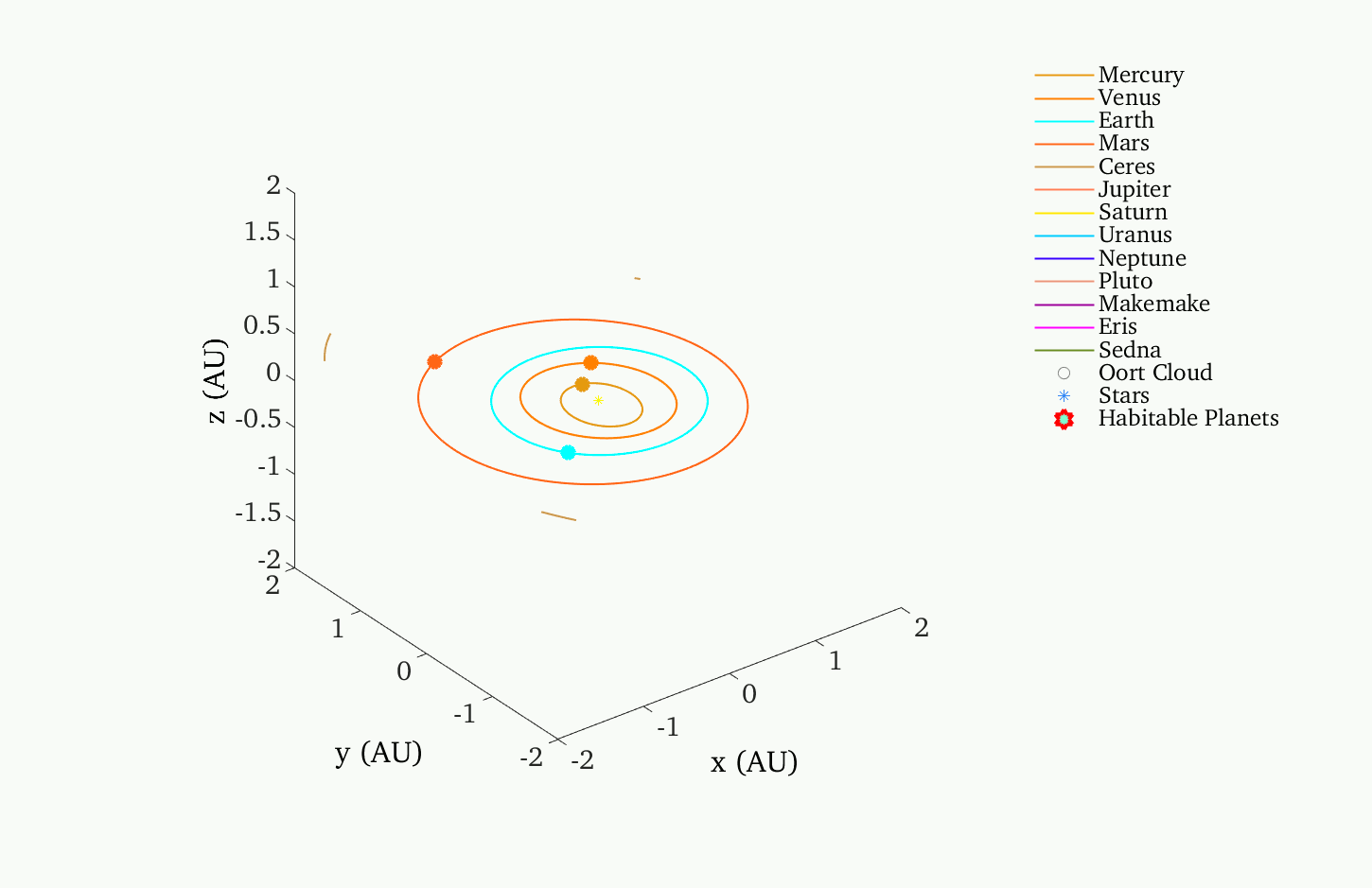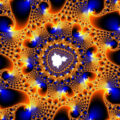As human spacecraft venture deeper and deeper into space, and missions hoping to study the outer reaches of our own solar system strive to become commonplace, nuclear fusion is among the leading candidates to replace the powerful-yet-limited chemical rockets in use today.
Not only is fusion significantly safer than any theoretical nuclear propulsion systems that rely on fission reactions like those found in nuclear weapons, but it promises significant weight-to-power ratio gains over conventional propulsion methods that make crewed missions beyond Mars virtually impossible to undertake.
To help speed up the development of reliable advanced propulsion systems that could power future spacecraft to the edge of the solar system and beyond, The Limitless Space Institute of Houston, Texas, selected and funded nine teams from across the country to conduct research on novel, sometimes exotic, forms of space drives, including nuclear fusion. The Debrief covered that process in detail in a two-part exclusive interview with Limitless Space’s highest-profile board member and the man who shares the name on the most widely referenced WARP drive concept to date, the Alcubbiere-White WARP Drive, Dr. Harold G “Sonny” White.
Known as the Limitless Space Interstellar Initiative, or more simply I-Squared grants, these awards were handed out in the fall of 2020, allowing the selected teams the time and money needed to conduct real-world research into things like Directed Energy Propulsion, Traversable Wormholes, and Nuclear Fusion, just to name a few.
One of those award winners was a team led by Professor Jason Cassibry from the University of Huntsville, Alabama (UAH), and in July of 2021, Professor Cassibry sat down with The Debrief to speak in depth about his past year of nuclear propulsion experiments funded by the grant, as well as the next steps needed to move this form of advanced propulsion closer to reality.
The Kid Who Dreamed About Going To Space
With a Ph.D. in mechanical engineering and significant coursework in aerospace and plasma physics, the 47-year-old, affable southern gentleman told The Debrief that he has been interested in the concept of nuclear fusion since he was only 15 years old.
“A friend of my grandmother, someone that she worked with at the post office, came over, and she said, ‘Hey, I’ve got this Discover magazine, I thought you might like to read it,'” recounted Cassibry. “The subject of the article was nuclear fusion propulsion and how such a drive could open up the solar system. And that just captivated me like nothing else.”
As things turned out, it would be decades before that youth had the opportunity to work on the still-nascent technology. Still, throughout that entire time, the enthusiastic engineer always felt the idea calling to him. Even still, he says, “it wasn’t until my Ph.D. down in Huntsville that I was actually getting to work on anything like that.”
This work ultimately took on a whole new direction when, about ten years ago, the professor says he decided to tap into the wealth of talent around him at the UAH campus and try to design simulation software that he hopes can aid fellow researchers in his field who are all trying to reach the elusive break-even point, where a fusion reactor’s output equals (or ideally, outperforms) the energy put into the system. That software tool is called Simulated Pulsed Fusion, or more simply, SPF.
“SPF is a code that has been developed with me and my students over about a ten-year period,” explained Cassibry, before adding with a chuckle that it “took about eight years longer than I thought it would.”
However, he noted, being able to tap into the money his team was awarded in the I-squared grant allowed them the needed resources to perform real-world fusion experiments in his lab, experiments that over the last year have significantly refined his simulation software to the point that he feels it can indeed help move the entire field forward.
“The constraint was that this code should work on a single laptop or desktop computer and give you a three-dimensional result within a few hours,” said Cassibry. “And if it didn’t, we didn’t design it right.”
“It won’t answer every question,” he added, “because there are some problems where you would just need racks of computers. But we shouldn’t really need that high of a resolution answer [at this stage]. What we’re trying to do is have a 3D tool that gives us an 80 or 90% solution that we can turn around quickly,” and apply the results to future experiments.

The Subtle Art of Building A Nuclear Fusion Propulsion Drive
When asked what the primary goal of his team’s SPF software was after competing for and winning the $125k grant, Cassibry proffered a modest yet broad view.
“The high-level picture of what we’re doing is trying to identify a route to break-even fusion that requires a relatively small amount of energy to ignite the flame,” he said. “The challenge with fusion is that every concept that breaks even or proposes to break-even results in a very large, complicated, expensive system that’s hard to tinker with. So we’re trying to explore a parameter space where we think we could actually get there with a much smaller device.”
That goal, says Cassibry, led him back to his childhood inspiration: a nuclear fusion device designed for space travel.
“In order to be able to go that fast, out to the outer gas giant planets in the Oort cloud, where your vehicle is going, let’s say, between 50 and 100 kilometers a second, you have to have a really good fuel economy and a lot of power in order to be able to do that,” explained Cassibry. “And it’s really only a handful of technologies that really aren’t developed yet that could potentially get there.”
After touching on experimental concepts like Light Sails, Antimatter Engines, and even WARP drives, Cassibry laid out just how much of a power-to-weight advantage Nuclear Fusion could offer over traditional methods of chemical-based propulsion.
“Chemical, and that would include your gasoline in your car, is something like 10 million joules per kilogram, and it’s a lot of energy,” he said, suddenly sounding like the even-toned, confident college professor who was awarded such a competitive grant. “By comparison, a battery is only about 10% of that, and capacitors or maybe 1% of that.” However, he continued, “nuclear is about a million times more energy-dense than any kind of chemical system, so you have potential with the same pound of fuel to deliver a lot more energy, a million times more energy than other propulsion systems.”
“Between chemical and nuclear, nuclear meaning fusion,” Cassibry later opined in a rare moment of outward confidence, “in terms of in-space propulsion, there’s no comparison.”
Of course, the mostly humble educator made sure to point out that his team is one of many working on fusion-based propulsion concepts and that he feels like their combined efforts across several approaches offers all of humanity the best chance at achieving a real-world, workable fusion energy space drive within his professional lifetime.
“I don’t want to claim that we’re the only ones with this line of thinking,” explained Cassibry, “there are several groups that are doing things like this. And I think in the next ten years you’re going to see a lot of exciting things come out. In my opinion, we have a lot of people barking up the right tree.”
Testing The Nuclear PRopulsion Future With Sparky?
In 2021, significantly advanced concepts like antimatter engines and WARP drives are mostly confined to mathematical theories and written concepts, but in recent years fusion experiments have progressed to the point that the LSI grant allowed the Huntsville team to do real-world experiments in their lab.
“There is a little bit of money out there, but it’s never sustained,” explained Cassibry of the competitive funding environment researchers like him often find themselves in. “A lot of it is paper studies. And so this [LSI I-squared grant] was a real opportunity to just focus purely on doing some of the science and some of the technical challenges, and hopefully overcoming some of those.”
To perform their experiments, the Huntsville team employed a massive bank of capacitors nicknamed “Sparky” capable of delivering the high-powered thrust of raw voltage (about 35 kV) needed to ignite the fusion reaction.
“What we have is what’s called a pulse power machine, and all it is, is a big bank of capacitors,” said Cassibry.
Each time Sparky is triggered, it makes a loud sound that the professor compares to a gunshot, letting them know that it is delivering its stored power to the intended target.
“We call it a target, or a load, but that’s just a fancy word for where the current goes,” the professor clarified with a chuckle. “It’s really just like a tiny little strip of powder, or mass of some sort, it might look like a tiny resistor, but it’s made of fusion fuel.”
The team performed dozens of these experiments over the last year, with a great number resulting in damaged power lines and capacitors, as well as a whole host of other victims of the incredible power loads being delivered by Sparky. Of course, the Huntsville team is not reporting that they have achieved over-unity energy output, but as the professor explained, that was never the intent of their experiments.
“This is not a break-even path,” said Cassibry. “This is just a known phenomenon that we’re trying to control when it occurs.”
Instead, he explained, the main goal of the experiments funded by the LSI I-squared grant was always the refinement and, ultimately, the SPF simulation software. Specifically, the tests his team ran using Lithium Hydride (as well as numerous non-fusion fuel options to limit expenses) helped refine the results of their software to the point where they can now confidently predict a much wider range of variables not previously refined enough or in some cases properly accounted for, in SPF.
“The goal was just to produce some fusion reactions and be able to take the measurements and get some matching of that with our simulations,” said Cassibry. “And what that allows us to do is then have a code, a multi-dimensional code, that can get agreement with experiments, and then scale that, and then play games with it to figure out what is a credible pattern to break even for low energy.”
Three months after his interview with The Debrief, Cassibry gave more or less the same updates on those experiments at the LSI Interstellar Initiative Grants Final Briefing held virtually on October 14th, 2021.
“That’s what we’re working on right now,” Cassibry said at that meeting, “uncovering all of the quirks and problems that come up and fix them as we go until we can get to a point where we can tweak the parameters and find out whether or not this thing ignites, and under what conditions it will.”
“We’ve had a lot of successes and a lot of setbacks,” he later added, “and we are excited about where we are headed.”

“Oh, we actually can fly!”
Throughout his entire interview, the outwardly humble professor made sure to credit the work of his “amazing” team’s work while also hinting that any successes they may attain in the future could very well involve many of the same researchers and even students.
These included Dr. Garbiel Xu, whose expertise is in Plasma Diagnostics and Plasma Physics; Mr. Sumontro Sinha, a specialist in Pulsed Power and Additive Manufacturing; Mr. Allen Davis, whose expertise lies in troubleshooting and Circuit Design; Mr. Andrew Walston, who is an expert in Plasma Diagnostics, Jacob Kinsey, a graduate research assistant who did a little of everything including crucial work on SPF, and finally what Cassibry described as, “a great, great number of undergraduate students.”
When asked how quickly his team’s concept could be brought to fruition with an open checkbook from someone like the Defense Advanced Research Projects Agency (DARPA) or the National Aeronautics and Space Administration (NASA), two organizations who have been known to fund this type of forward-looking technology occasionally, Cassibry offered a realistic, yet hopeful appraisal.
“If we had an open checkbook like that, we would all go to work full time, our group would work full time working on this problem,” he said. “I hate to use the word encumbered here because it sounds like it’s a burden to do the other things like teaching and service work that we do, and it’s not, it’s a privilege. But if we had an open checkbook, we would just go straight in and work full time on getting experiments running, finish getting the code matching the experimental data, and then figuring out the steps, the path to break even. I think we would have impressive results in a very short time.”
Near the end of the lengthy interview, the professor made sure to point to the increasing number of people around the globe working in this field besides his Huntsville team, which he says often results in valuable information and tools being shared that can aid everyone’s progress.
“I see the progress, you know, worldwide, and everybody’s hungry for the tools,” he said. “The availability of experiments, the interconnectivity of everybody through the internet to be able to exchange ideas, it’s just unprecedented.”
As for when that breakthrough may occur?
“I think we are about five to ten years away from a break-even system,” he said. “I think in the next five or ten years, somebody is going to have a break-even system. And once that happens, I think you’re going to see a lot more [follow].”
“There’s already a lot of money pouring in,” the suddenly wide-eyed professor added, finally bringing the interview to a close, “but once we get over that psychological hump of ‘can we actually do this or not’ it’s kind of like that Wright Brothers flyer moment, like, ‘Oh, we actually can fly!'”
Follow and connect with author Christopher Plain on Twitter: @plain_fiction
